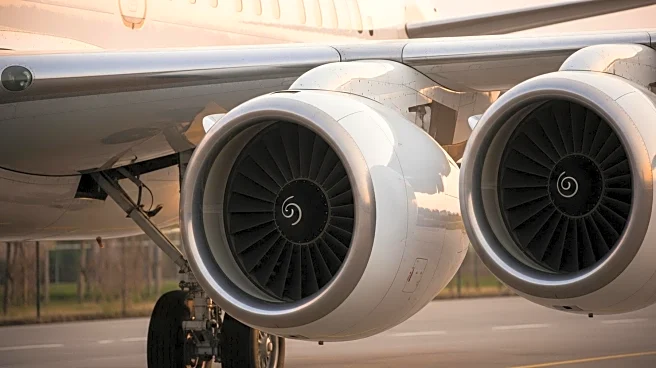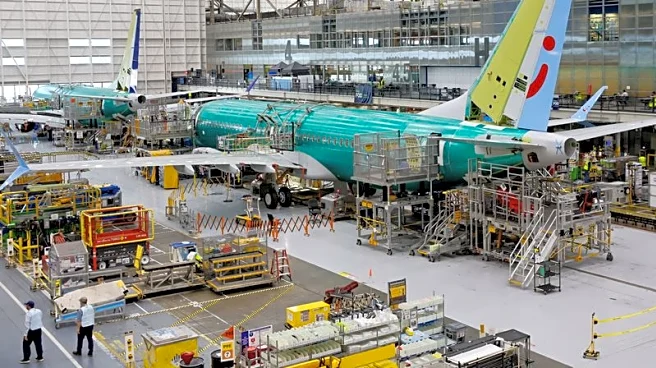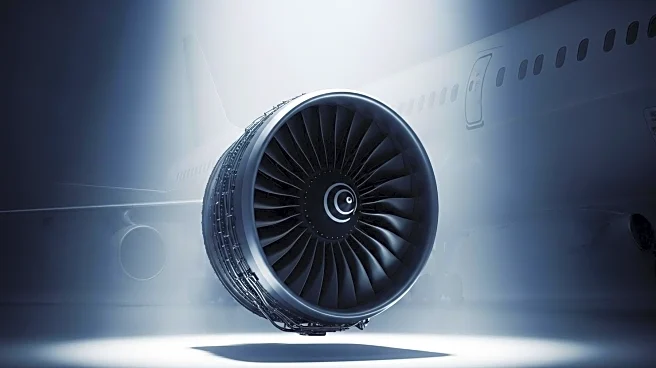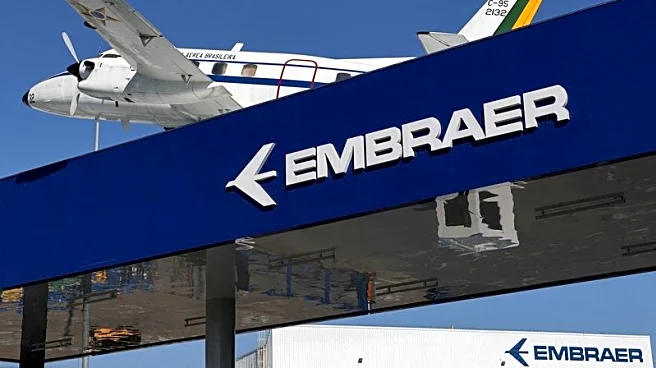What is the story about?
What's Happening?
Embraer is experiencing production delays for its E175 regional jets due to a shortage of GE Aerospace CF34 turbofans. The supply chain issue has emerged as a significant challenge for Embraer, with CEO Francisco Gomes Neto highlighting the problem as a major concern this year. GE Aerospace has been producing variants of the CF34 engine since the early 1980s, but recent constraints have affected delivery schedules. This shortage is part of broader supply chain disruptions impacting the aviation industry, including fuselage-component shortages. Embraer aims to deliver 77-85 E-Jets this year, with a significant portion being E175s, but the engine shortage poses a risk to meeting these targets.
Why It's Important?
The shortage of CF34 turbofans is critical for Embraer as the E175 remains its best-selling model, particularly among U.S. regional airlines. These airlines are unable to operate the heavier E175-E2 due to pilot-contract provisions, making the availability of the CF34-powered E175 essential. The production delays could impact Embraer's ability to fulfill its order backlog, which includes 208 unfilled orders for E175s. This situation underscores the ongoing supply chain challenges in the aviation industry, affecting not only Embraer but also other manufacturers like Airbus, which faces similar issues with CFM Leap turbofans.
What's Next?
Embraer and GE Aerospace are likely to continue working closely to resolve the turbofan supply issues. The aviation industry may see increased collaboration and innovation to address these supply chain constraints. Airlines relying on Embraer's E175 jets may need to adjust their operational strategies if delays persist. Additionally, the industry might explore alternative solutions or suppliers to mitigate future disruptions.
Beyond the Headlines
The turbofan shortage highlights the vulnerability of global supply chains, particularly in high-tech industries like aviation. It raises questions about the resilience and adaptability of manufacturers in the face of such challenges. The situation may prompt a reevaluation of supply chain strategies, including diversification and increased investment in local production capabilities.
AI Generated Content
Do you find this article useful?















